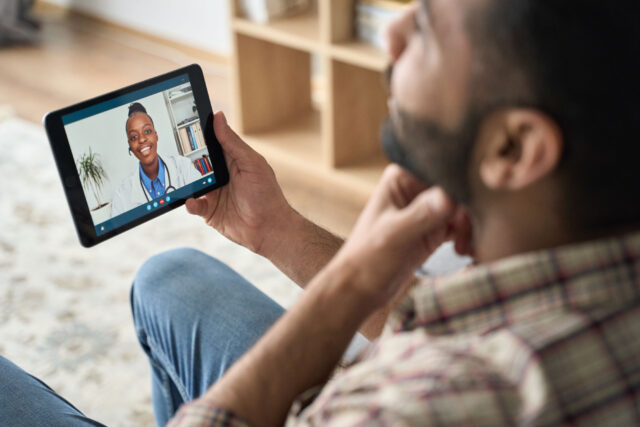California policymakers have recently taken bold steps to ease the strain on the health care infrastructure during the COVID-19 global pandemic. California was the first to enact a statewide shelter-in-place order to reduce community transmission. It has also implemented measures to lower the rate of transmission in health care settings—including policies that encourage the use of telehealth, especially online doctor visits. To make online healthcare truly accessible, however, the state will need to address its digital divide.
The California Department of Managed Health Care has required that all health plans allow people to obtain health care via telehealth and reimburse telehealth consultations at the same rate as in-person visits, without increasing patient costs. This mandate covers Medi-Cal managed-care plans, which serve about 85% of the low-income Californians enrolled in the program. The California Department of Health Care Services had already given providers more flexibility in billing Medi-Cal for telehealth services in 2019; in late March, it further expanded the range of telehealth services that safety net providers can provide.
A recent survey found that a small percentage of Californians use telehealth services, and national estimates (based on Medicare and private health claims data) suggest that telehealth accounts for less than 0.25% of medical services provided. Policy barriers, such as restrictive requirements and privacy concerns, contribute to low usage. Recent state and local efforts to lower these barriers could help boost usage, but not all Californians will be able to access medical care through telehealth due to the state’s digital divide.
Among low-income Californians, those with private health insurance are most likely to have computers in their household (82%), while those covered by Medicare (mostly seniors over 65) least likely to have computers (59%)—indeed, these low-income Californians are less connected than those who are uninsured. About 75% of Californians covered by Medi-Cal have access to a computer at home and about 60% report that they have high-speed internet connectivity.

Some of the policy responses to the COVID-19 crisis could narrow the state’s digital divide. For example, the governor recently announced a plan to distribute computers and provide high-speed internet access to support distance learning for California’s K–12 students while schools are closed. This could help many low-income families gain access to telehealth and other online resources. However, one-third of low-income households do not include school-aged children.
As the public health crisis continues to unfold, it will be important to assess trends in telehealth use and to understand and address disparities. Currently, the state has limited resources for this type of analysis, but the comprehensive health payment database that is currently being developed could help policymakers examine these and other issues.
Topics
coronavirus COVID-19 digital divide Health & Safety Net health care online healthcare Population seniors telehealthLearn More

Post Title

COVID-19’s Toll on Mental Health

Health in California Two Years into the Pandemic

How Telehealth Can Bring Equity to Health Care

Policy Brief: Pandemic Changes to Medi-Cal and Implications for California’s Immigrant Farmworkers




